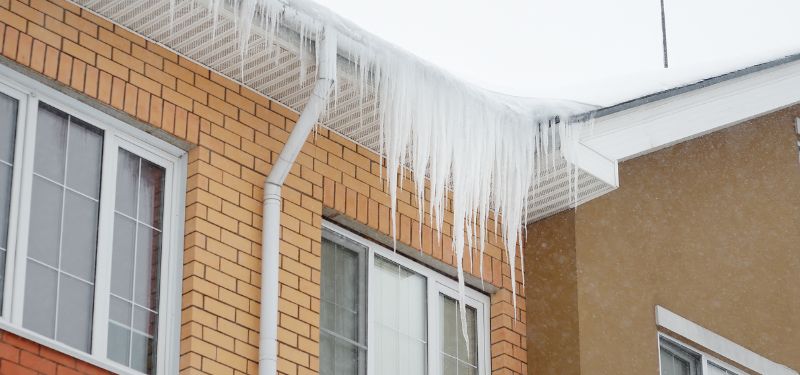
Winter in Texas may not be as harsh as in other parts of the country, but that doesn't mean homeowners should overlook the importance of winter home safety. With temperature drops, occasional snowfall, and freezing conditions, it's crucial to take necessary precautions to protect your home and ensure the safety and comfort of your family.
In this comprehensive guide, we will delve into the unique challenges that come with a Texas winter and provide you with practical tips and strategies to keep your home safe and warm during the colder months. From maintaining your heating system to protecting your pipes, preparing your yard, and ensuring indoor safety, we've got you covered.
Understanding Texas Winter: Unique Challenges for Homeowners
Texas winters may not be as severe as those experienced in northern states, but they still present unique challenges for homeowners. Understanding these challenges is crucial in order to effectively prepare and protect your home during the winter months. Let's explore some of the key factors that make Texas winters distinct:
Fluctuating Temperatures: Texas winters are known for their unpredictable weather patterns. Temperatures can fluctuate significantly within a single day, with mornings starting off chilly and afternoons warming up considerably. This temperature variability can put a strain on your home's heating system and make it challenging to maintain a consistent indoor temperature.
Occasional Freezing Conditions: While Texas winters typically don't bring prolonged periods of freezing temperatures, there are occasions when the mercury drops below freezing. These freezing conditions can lead to issues such as frozen pipes, icy roads, and potential hazards around your property.
Limited Snowfall: Unlike regions further north, Texas doesn't typically experience heavy snowfall during winter. However, occasional snow showers or ice storms can still occur, creating slippery surfaces and potentially impacting travel and outdoor activities.
High Humidity: Texas winters often come with high humidity levels, which can make the cold weather feel even more uncomfortable. High humidity can also contribute to moisture-related issues in your home, such as condensation and mold growth.
Wind Gusts: Strong winds are not uncommon during Texas winters, especially in open areas or coastal regions. These gusts can make the temperature feel colder and potentially cause damage to outdoor structures or loose objects.
By understanding these unique challenges, you can better prepare and address the specific needs of your home during the winter season in Texas.
Check Heating Systems
In Texas, where winters are generally mild, heating systems might not be as heavily relied upon as in colder regions. However, when cold fronts do arrive, it's crucial to ensure that your heating system is in top condition. Schedule a professional inspection to catch any potential issues early on. Change or clean the furnace filter to optimize efficiency, ensuring your home stays comfortably warm during cooler spells. For those with fireplaces, a certified chimney sweep can remove creosote buildup, reducing the risk of chimney fires and ensuring a safer, more efficient burn.
Keeping a Safe and Comfortable Indoor Temperature
Set Thermostat: Set your thermostat to a comfortable temperature to maintain a warm and cozy indoor environment. Consider using a programmable thermostat to efficiently manage temperature settings.
Weatherstripping: Seal any drafts around windows and doors with weatherstripping to prevent cold air from entering your home.
Insulation: Ensure your home is properly insulated to prevent heat loss. Check insulation in attics, walls, and crawl spaces, and add more if needed.
Space Heaters: If using space heaters, place them away from flammable materials and never leave them unattended. Follow the manufacturer's instructions and safety guidelines.
Seal Drafts
While Texas doesn't experience the bone-chilling cold of northern states, drafts around windows and doors can still make your home feel less comfortable. Conduct a meticulous inspection to identify gaps or drafts. Utilize weather stripping and caulk to seal these openings, not only preventing heat loss but also enhancing the overall energy efficiency of your home.
Carbon Monoxide Detectors
While heating systems are used less frequently in Texas, carbon monoxide can still pose a risk. Install detectors in key areas of your home and regularly check and test them to ensure they are functioning correctly.
Test Regularly: Test carbon monoxide and smoke detectors monthly to ensure they are functioning properly. Replace batteries as needed and replace the detectors according to the manufacturer's recommendations.
Placement: Install carbon monoxide detectors near sleeping areas and on every level of your home. Place smoke detectors inside each bedroom, outside sleeping areas, and on every level of your home.
Maintenance: Keep detectors clean and free from dust or debris that may hinder their operation. Follow the manufacturer's instructions for proper maintenance and testing.
Insulate Pipes
Texan winters may bring occasional freezes, and exposed pipes can be vulnerable. Insulate pipes with materials such as pipe insulation or heating tape to prevent freezing and potential bursts. Don't forget to disconnect and drain outdoor hoses, protecting both the hoses and the connected pipes from freeze damage.
Proper Techniques for Pipe Protection
Insulate Exposed Pipes: Insulate any exposed pipes in unheated areas, such as crawl spaces, attics, or garages. Use pipe insulation sleeves or wrap the pipes with heating cables.
Seal Cracks and Gaps: Inspect your pipes for any cracks or gaps and seal them with insulating tape. This will prevent cold air from reaching the pipes.
Keep Interior Doors Open: Allow warm air to circulate freely by keeping interior doors open. This helps to maintain a consistent temperature throughout your home and prevents cold spots where pipes might be located.
Drip Faucets: On extremely cold nights, allow faucets connected to vulnerable pipes to drip slowly. This helps relieve pressure and reduces the risk of freezing.
Maintain Adequate Heating: Ensure that your home is adequately heated, especially in areas where pipes are located. Keep the thermostat set to a temperature that will prevent freezing.
By being proactive and taking these measures to protect your pipes, you can minimize the risk of freezing and bursting. Remember, prevention is key in avoiding costly repairs and water damage caused by frozen pipes during the winter season.
Fire Safety
Fire risk grows during this time of year. The Red Cross says that house fires "generally increase during the fall and winter, with December and January being the peak months." Besides the fire hazard, alternative heating sources, overloaded electrical circuits, and forgotten candles can increase the risk of house fires. Ensure you have working fire extinguishers at key locations. Familiarize yourself with their proper use through training, and install them high on walls, away from heat sources.
Fire Safety Precautions
Smoke Alarms: Install smoke alarms on every level of your home, including inside each bedroom and outside sleeping areas. Test them regularly and replace batteries as needed.
Carbon Monoxide Detectors: Install carbon monoxide detectors near sleeping areas and on every level of your home. Check them regularly to ensure they are functioning correctly.
Fire Extinguishers: Have fire extinguishers readily available on each floor of your home, especially in the kitchen and near fireplaces. Ensure they are properly maintained and everyone in the household knows how to use them.
Electrical Safety: Avoid overloading electrical outlets and use surge protectors to prevent electrical fires. Inspect cords and plugs for any damage and replace them as necessary.
Winterize Landscaping
Texan winters can bring unexpected cold snaps, and it's crucial to prepare your outdoor space. Trim overhanging branches and remove dead limbs to prevent potential damage during winter storms. For potted plants, consider bringing them indoors or covering them to shield against sudden temperature drops.
Winterizing Plants and Garden
Pruning: Trim back shrubs and bushes in late fall to promote growth and prevent damage from heavy snow or ice accumulation.
Mulching: Apply a layer of mulch around the base of plants and trees to protect their roots from freezing temperatures.
Covering: Use protective covers, such as burlap or frost blankets, to shield delicate plants from frost and extreme cold.
Watering: Water your plants adequately before the first freeze to ensure they are well-hydrated and better equipped to withstand the winter months.
Prepare for Power Outages
While power outages in Texas might not be as common as in colder regions, unexpected weather events can still lead to disruptions. Assemble an emergency kit with flashlights, batteries, non-perishable food, and water. Consider investing in a portable generator for backup power during potential outages caused by winter storms.
Outdoor Equipment Maintenance
Texan winters offer a break from lawn maintenance, but it's essential to prepare outdoor equipment for winter storage. Service lawnmowers and other tools to ensure they're ready for use when the warmer weather returns. Additionally, clear gutters to prevent ice dams, which can lead to water damage during winter rains.
Winterize Your Vehicle
While snow and ice on Texas roads are rare, it's still crucial to ensure your vehicle is ready for any potential winter weather. Check antifreeze levels, and keep an emergency kit in your car, including blankets, water, snacks, and a first aid kit.
Protect Pets
Texan winters can bring cooler temperatures, and it's essential to ensure the well-being of your pets. Bring outdoor pets indoors during colder spells and create a warm and cozy space for indoor pets with extra blankets and a comfortable bed.
Stock Emergency Supplies
While Texas is not known for severe winter weather, it's wise to be prepared for unexpected events. Assemble a comprehensive emergency kit with non-perishable food, water, medications, and essential documents. Keep extra blankets and warm clothing accessible for each family member. Periodically check and replenish the first aid kit to ensure it's well-stocked. Ensure all family members know the location of the first aid kit and are familiar with its contents.
To see the full list of items and get other great information on first aid, visit the Mayo Clinic first aid kit page here.
Stay Informed
Winter weather in Texas can be variable, ranging from mild to potentially severe during occasional winter storms. Stay informed by monitoring forecasts, especially during winter storms. Sign up for local emergency alerts to receive timely information about severe weather conditions.
Keep Pathways Clear
Texan winters may bring unexpected icy conditions, particularly during rare freezing events. Prevent slips and falls by applying salt or sand to icy walkways. Promptly shovel snow, if applicable, to avoid accumulation and ensure safe pathways around your home.
By taking these detailed actions, you're not just preparing your home for winter — you're creating a safe haven for your family. Whether you're in the heart of Dallas or the coastal beauty of Corpus Christi, these steps ensure that your Texas home is ready for the unique challenges of the winter season. Stay warm, stay safe, and enjoy the winter wonder in the Lone Star State!










